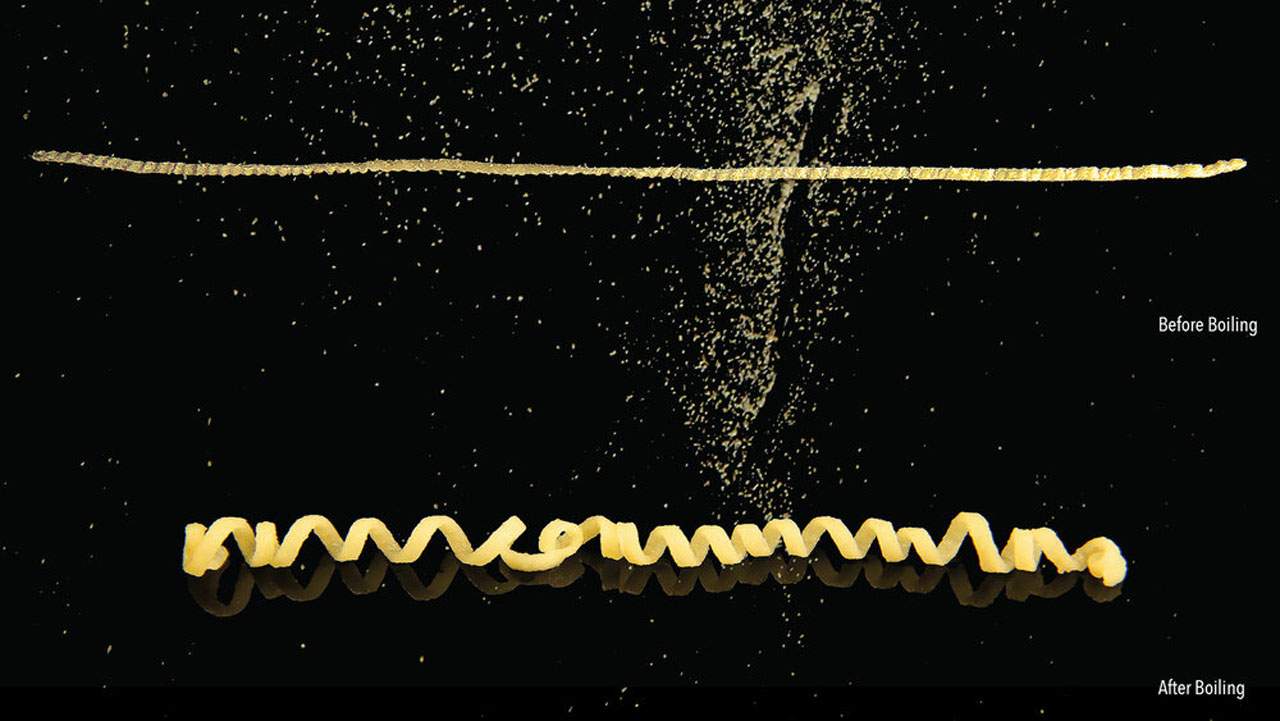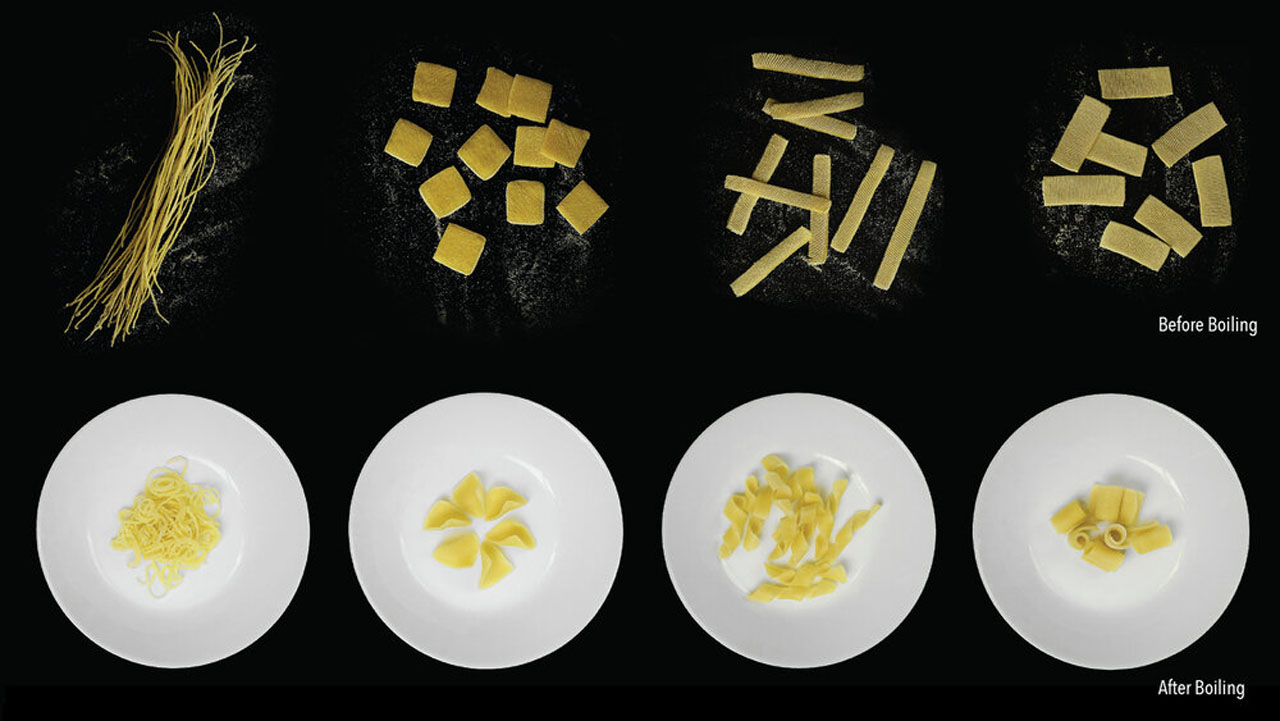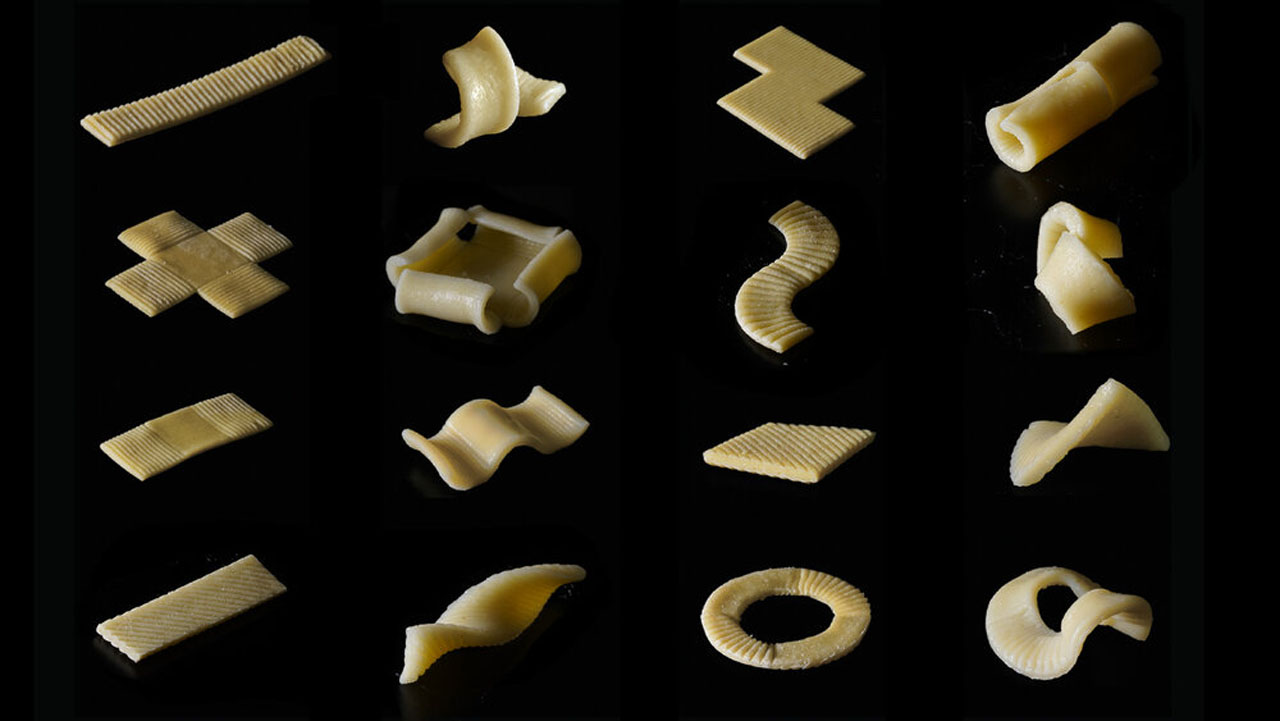Shape Changing Pasta Starts Out Flat For More Sustainable Packaging
When you go to the grocery store and buy pasta today, you buy large packages or boxes of pasta that starts in the shape you end up eating. However, in the future, the pasta you buy in the store may be completely flat and only take the shape we're familiar with when it's cooked. Researchers who've created the morphing pasta were inspired by how furniture is flat-packed to save packaging space and reduce the carbon footprint during transportation.The team is developing a groove-based shape morphing technique that can allow many types of material, particularly edible materials like Italian pasta, to be flat-packed and then change shape when cooked. The researchers say the plastic used in food packaging is a major contributor to landfills in the US. The team introduced a simple and universal diffusion-based mechanism to enable a transient morphing effect in structures with parametric surface grooves.
The team says the grooves can be created with a single material and fabricated using low-cost manufacturing methods such as stamping, molding, or casting. Parametric surface grooving can induce temporary asynchronous swelling or deswelling that can transform flat objects into a desired three-dimensional shape.
When packaging items like pasta with a 3D shape, more than 60 percent of the packaging is used to pack air, a large portion of the packaging space required could be reduced if the pasta used a flatpack. Researchers say that nearly all food morphs during the cooking process. Pasta expands and softens as it's boiled as a result of water diffusion.
Researchers say the final shape of the food directly impacts the eating experience, including how it feels in the mouth, how it tastes, and how it looks. Researchers on the project say that as much as one percent of greenhouse gas emissions is due to cooking pasta. The emissions could be reduced by half if the shipping and cooking process could be optimized. The team believes flat pasta with a surface texture offering a larger surface area to volume ratio would cook more quickly than pasta with an inner cavity, such as macaroni.



